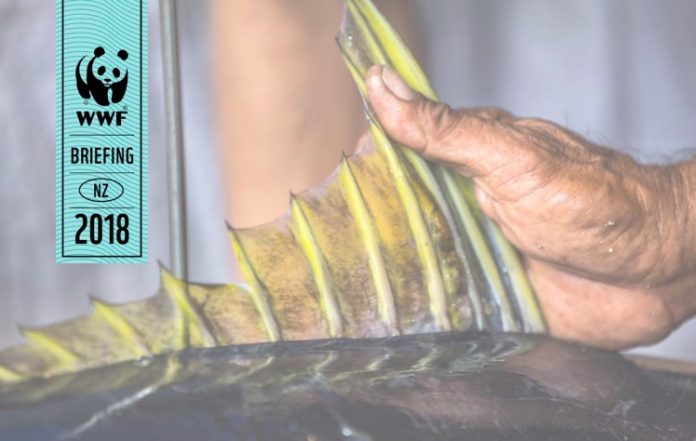WWF has published a report: Blockchain: Transforming Seafood Supply Chain Traceability
The WWF & Viant.io pilot to prove blockchain supply chain traceability for use in seafood traceability. The report provides description of work, to offer lessons learned, and to provide a potential roadmap to develop blockchain supply chain solutions.
Joseph Lubin has shared the report on twitter saying: The @WWF and @viant_io have published a new report on full supply chain seafood traceability and transparency. Blockchain enables the market to reward responsible/ethical producers, and push those that are illegal/unethical out of the supply chain.
Seafood traceability is increasingly becoming a focal point to address the entry of illegally and unethically produced products into the supply chain. More and more, experts view full supply chain traceability and transparency as the only way to ensure against the continued entry of illegally or unethically produced seafood products into the seafood supply chain. Blockchain can be a significant part of the solution – providing the full transparency and traceability required to enable the market to reward responsible and ethical producers, and push those that are illegal and unethical out of the supply chain.
By providing this transparency and traceability, it can enable the market to both reward producers who engage in best practices, and exclude illegal and unethical producers. This report describes a WWF-led pilot to prove blockchain supply chain traceability for use in seafood traceability, specifically for tuna caught in a Fijian longline fishery. The purpose of the report is to provide a description of the work undertaken, to offer lessons learned, and to provide a potential roadmap for others who wish to develop blockchain supply chain solutions.
The benefits include:
· protection of public health;
· improved trade;
· strengthened sustainability practices;
· premium for sustainable produce;
· reduced recall scope;
· increased consumer trust;
· quality assurance and value-chain efficiencies;
· reduction of brand risk arising from association with unacceptable labour practices; and
· better regulatory compliance.
What’s the problem that blockchain aims to solve?
Seafood is a truly global commodity. A fish caught in one part of the globe might change hands dozens of times and undergo multiple forms of processing and packaging before reaching its ultimate destination – or destinations – thousands of miles away. As a result, seafood supply chains are often opaque and complex. Information is maintained in silos by separate supply chain actors in such a way that it is virtually impossible to fully or effectively trace a seafood product from its origin to its ultimate fate. This obscured supply chain ecosystem allows some actors to access and exploit those supply chains without being subject to recognised legal and ethical standards.
Over the last five years, increasing international media coverage has highlighted evidence of human rights violations as well as other illegal and unethical practices in various fisheries across the globe. Analyses and associated media have highlighted Illegal, Unreported, and Unregulated (IUU) activities, including overfishing, human rights abuses, and fraud in the global seafood industry.1 The most recent assessments indicate that up to US$23 billion of global fisheries value is lost to IUU.2 In 2013, a study conducted by Oceana in the US found that up to 59 per cent of tuna samples were mislabelled.3 Most recently, a 2018 report from Greenpeace, “Misery at Sea”, highlighted some of the documented human rights abuses in fisheries.4 As a result, the global seafood industry faces unprecedented criticism and declining trust among consumers. At the same time, companies practicing environmental and social responsibility are often not fully recognised for their efforts. People can often paint industry leaders with sustainable practices and fair labour standards with the same broad brush as the illegal and unethical producers. Additionally, in an effort to reduce brand and reputation risk, end markets are seeking mechanisms to ensure that they do not source from supply chains engaged in illegal or unethical practices. At its core, markets, and increasingly consumers, are simply seeking to purchase from supply chains that they can trust. Fully transparent and traceable seafood supply chains, facilitated by the blockchain technology, could potentially solve the problem of IUU fishing in supply chains. Blockchain technology’s inherent transparency and traceability could effectively eliminate illegal or unethical seafood from the supply chain. It would achieve this unprecedented outcome by empowering seafood buyers and consumers to make well-informed commercial choices based on verifiable information. It would also provide an effective platform for regulatory authorities to identify and address potential risks.
Conclusion and Recommendations
The global seafood supply chain must address traceability in a genuine way if it hopes to address market concerns regarding illegal and unethically produced seafood products. Blockchain supply chain traceability holds immense promise to address those concerns. The transactional efficiencies made available to business participants alone should encourage participation. Additionally, the markets will continue to call for the level of transparency, traceability, and trust that realistically can only be afforded by blockchain. While the promises of Blockchain are lofty, and there are challenges to work through, it is clear that Blockchain will inevitably change the face of supply chain traceability for commodities such as seafood. Like E-commerce, blockchain proposes to be another landmark transformative technology, and once we pass through the door, there will be no going back, Like with many technologies, those companies that lead the revolution will be the beneficiaries, while those slow to adopt Blockchain will find themselves either struggling to compete or out of business. The following recommendations reflect the experience of the participants in this project. While they are not comprehensive, they are intended to capture the most important issues faced in the development and implementation of the project while providing guidance to others how to go about executing their own blockchain supply chain implementation.
Read the full report here: Report




